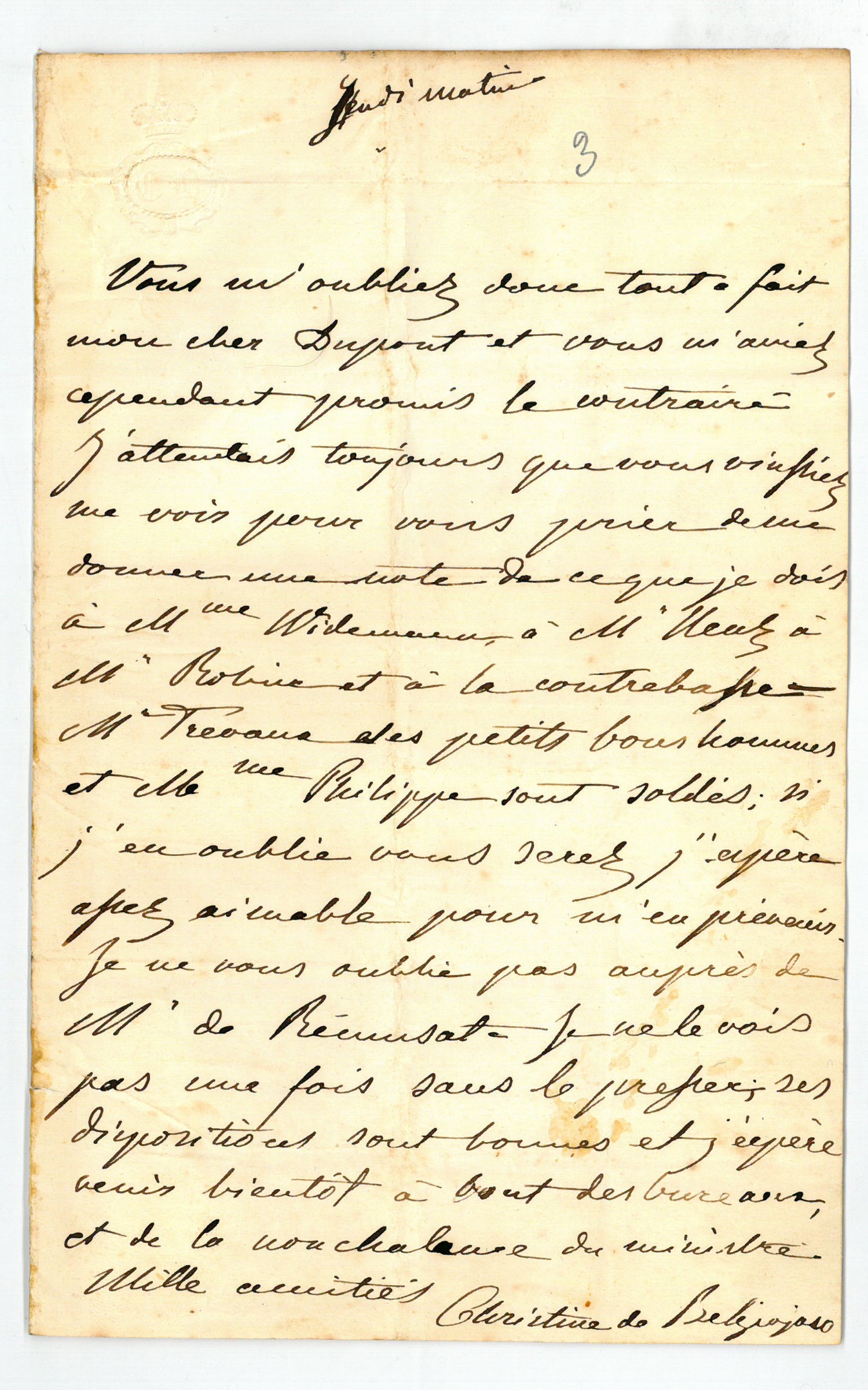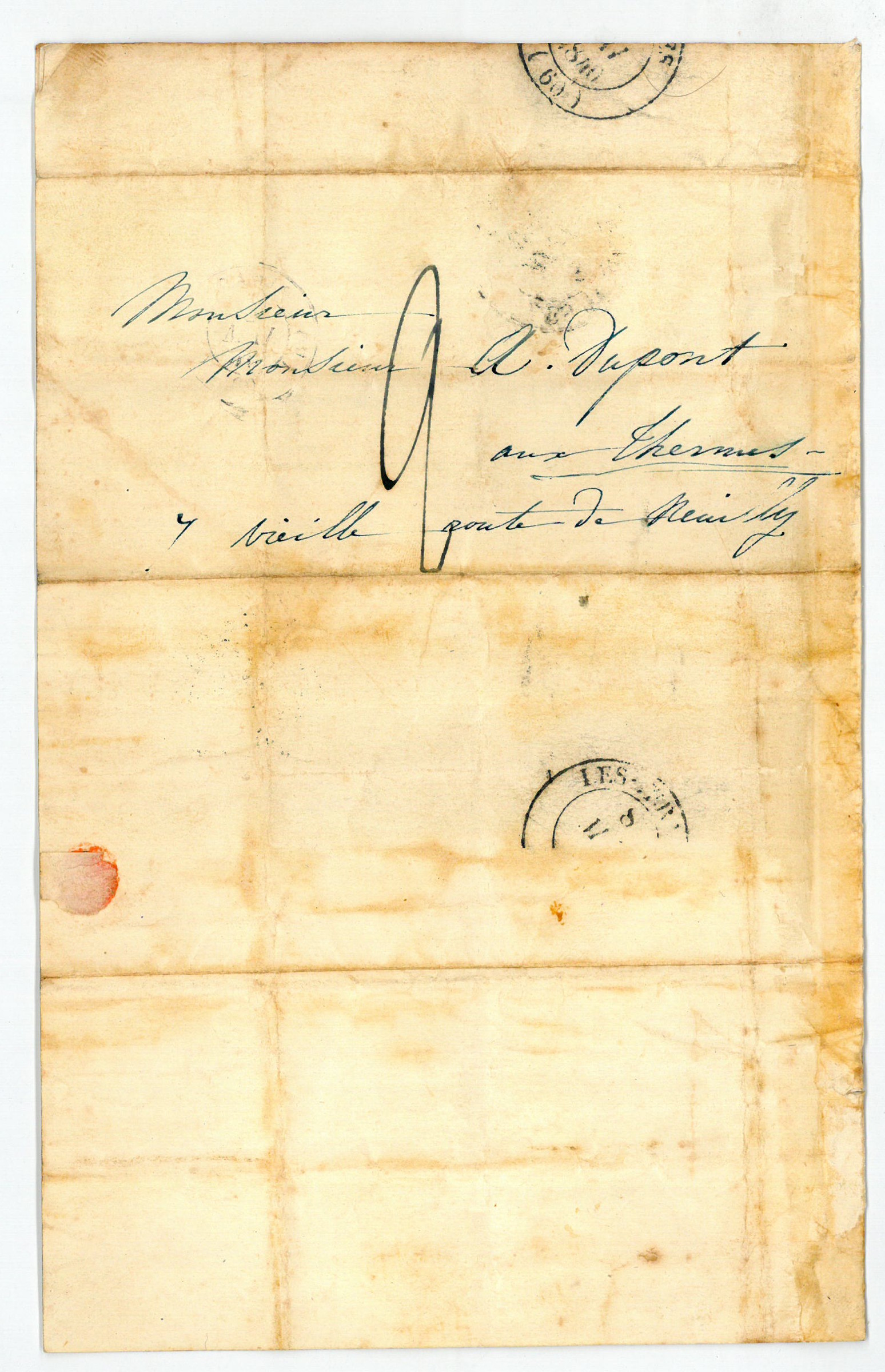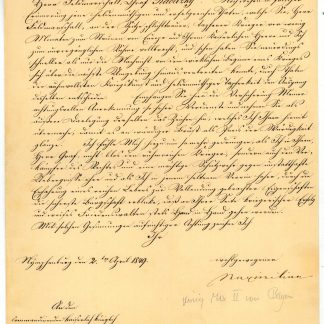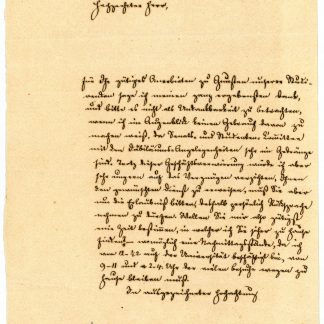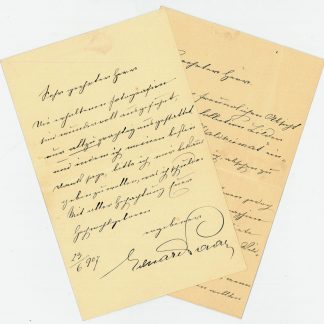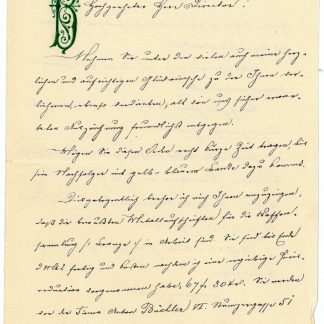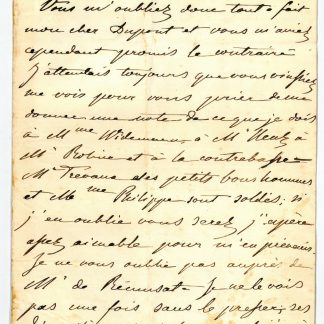Autograph letter signed.
8vo. 1 p. With autograph address and traces of seal.
€ 350,00
To the operatic tenor Alexis Dupont (1796-1874), asking him to indicate to her the outstanding fees of several musicians. Also, the Princess promises Dupont to intercede on his behalf with the minister Charles de Rémusat in an unspecified matter: "Vous m'oubliez donc tout à fait mon cher Dupont et vous m’aviez cependant promis le contraire. J’attendais toujours que vous vinssiez me voir pour vous prier de me donner une note de ce que je dois à Mme Widemann, à Mr Nenz, à Mr Robin et à la contrabasse. Mr Trevaux des petits bons hommes et Mme Philippe sont soldés; si j’en oublie vous serez j’espère assez aimable pour m’en prévenir. Je ne vous oublie pas auprès de Mr de Rémusat. Je ne le vois pas une fois sans le presser; ses dispositions sont bonnes et j’espère venir bientôt à bout des bureaux, et de la nonchalance du ministre [...]".
The charming letter was probably written in the aftermath of one of Belgiojoso's famous soirees. It can be dated with respect to Charles de Rémusat's brief term as Minister of the Interior in 1840. Cristina Belgiojoso was an active participant in the Risorgimento and was forced to flee from the Austrian authorities to France in 1830. During the 1830s and 1840s her Paris salon was a meeting place for Italian revolutionaries such as Vincenzo Gioberti, Niccolò Tommaseo, and Camillo Cavour. Her impressive guest list also included important artists such as Alexis de Tocqueville, Honoré de Balzac, Alfred de Musset, Victor Hugo, Heinrich Heine, and Franz Liszt. In the 1848 Italian revolutions she organized and financed a troop of soldiers and fought in the Milanese uprising against the Austrians for Italy's independence. Following the collapse of the short-lived Roman Republic in 1849, Belgiojoso fled to Constantinople, where she lived in exile for eight years. In 1856, she finally returned to Italy and worked with Camillo Benso Cavour for Italian unification, which was achieved in 1861.
On stationery with embossed monogram. Traces of folds and former mounting. Some browning and stains.

